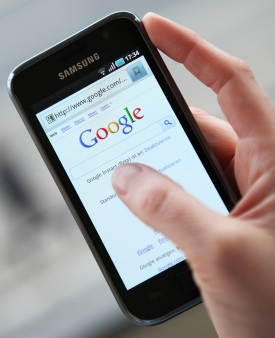Retail environments have fundamentally changed in recent years, from the traditional bricks and mortar concept, all the way to today’s multi-channel model. Mobile devices, in particular smartphones and tablets, have had a big impact on the industry, with consumers now integrating these into their shopping experience.
This change can be explained on the basis of data from the IMRG Capgemini e-Retail Sales Index:
- 38% of the UK population owned a smartphone in 2012.
- 28% of UK consumers have used a smartphone to access websites while shopping.
- 40% of UK consumers using a smartphone while shopping ultimately made a purchase in-store, online or via mobile.
The total revenues attributable to online shopping in the UK over the past decade have come to over £250 billion – smartphones and other mobile devices are considered to be the main contributor to these statistics.
A recent study by Retail Customer Experience makes it even clearer. It indicates that the mobile consumer performs a variety of in-store activities on mobile devices. At least half of consumers owning a smartphone have looked for reviews about a retailer during a visit, 55% have used mobile devices to conduct price comparisons in-store and 34% have scanned a QR code or wrote a review (9%). Furthermore, more than a third of survey respondents (37%) have visited a brand or retailers webpage via mobile phone.
These facts demonstrate that the mobile device is a welcome instrument to complement shopping experiences indicating that mobile search and retail are becoming increasingly popular.
Furthermore, the figures mentioned above actually show that it is basically the consumer who has changed, forcing retailers to make progress in research and development in order to keep up with the increasingly demanding customers. In the traditional channel, a consumer could only interact with a retailer when they were near or within the store whereas the mobile channel allows consumers to have constant access to the retailer’s environment.
Empowered mobile consumers have changed the rules
Bricks and mortar retail stores have had to re-invent their business model adapting to an entire new segment; the mobile consumer, empowered with their device in a shopping environment as they are enabled to compare products, prices and services quickly and check customer reviews and post customer reviews in real time.
The integration of mobile devices in terms of information search has impacted on retailers in two ways. The marketplace has become more transparent which limits opportunities for marketers and it has opened up new possibilities to push sales through different channels, reaching the mobile consumer within his individual search activities. An adoption to the consumers search patterns is imperative in order to stay competitive.
The issues discussed highlight the necessity for retailers to combine high-end mobile technology and mobile infrastructures with marketing tactfulness to assist the customer in their information search, ensuring consistent learning about their individual mobile behaviour patterns in order to win the “battle” for the customer – in and outside the store – guaranteeing a high level of market competitiveness.
Search for information is the key activity
Especially for younger consumers, mobile has already become an integral part of the shopping experience. The key activity is information search, whereby the mobile consumer searches before, during and after shopping. The power that the consumer obtained through their mobile device is reflected in their purchase behaviour. The consumer makes a buying decision when they feel it is the right moment. Doing so, the best deal wins. Hence, loyalty has been highly impacted on purchase behaviour.
This type of consumer does not rely on information provided by the retailers anymore, also the recall of information or experiences from memory is becoming less important for the mobile consumer. In contrast, external search has increased in relevance. External search is initiated when consumers need more information, they seek this from the retailer but also from the media or other people and independent sources from peers, family and the marketplace.
What does this mean for the retailer’s digital marketing concept?
A mobile device provides important touch points for retailers to encourage a purchase through adequate information supply. As the use of mobile devices for commercial purposes is growing, these devices should have top priority in the retailer’s marketing strategy. Apart from the application of best practice mobile marketing strategies as part of their pull and push advertising, retailers should adapt and optimise their digital marketing channels to the individual’s search behaviour.
On the one hand, when a consumer searches for a specific product or service via a mobile device, retailers have to make sure to be within the top Google rankings to direct the consumer to their mobile website. Mobile SEO is therefore key to success. On the other hand, retailers also have to make sure to have the correct (mobile) landing pages for relevant terms in order to lay the foundation for a conversion providing all the most relevant information in one place, to be able to get the sale before the mobile consumer enters a competitor’s site.

